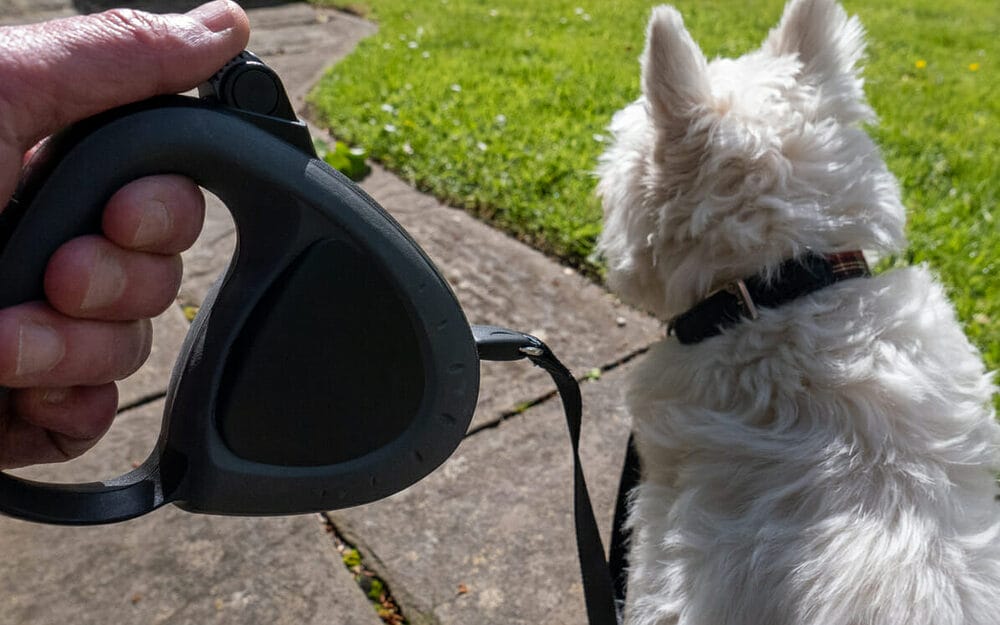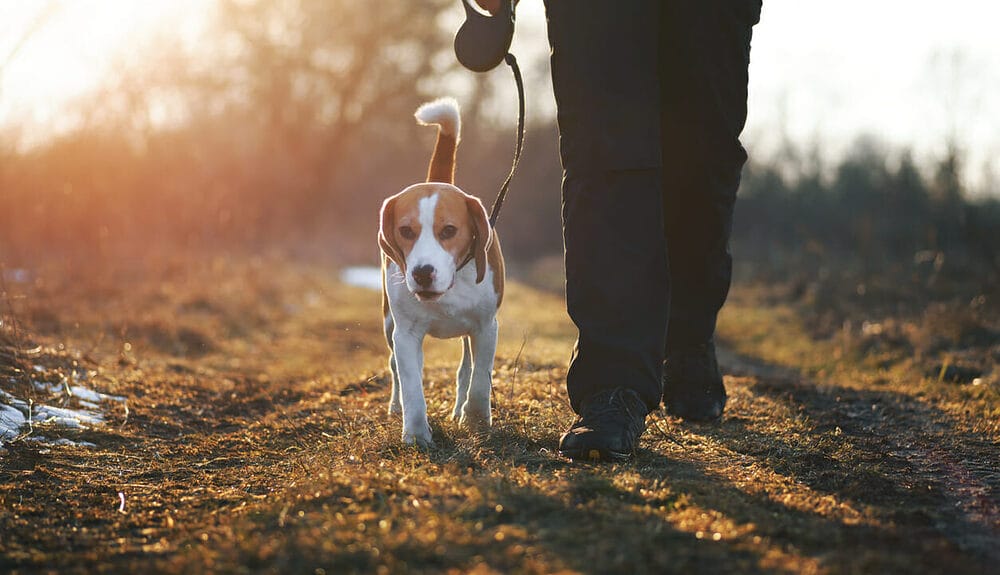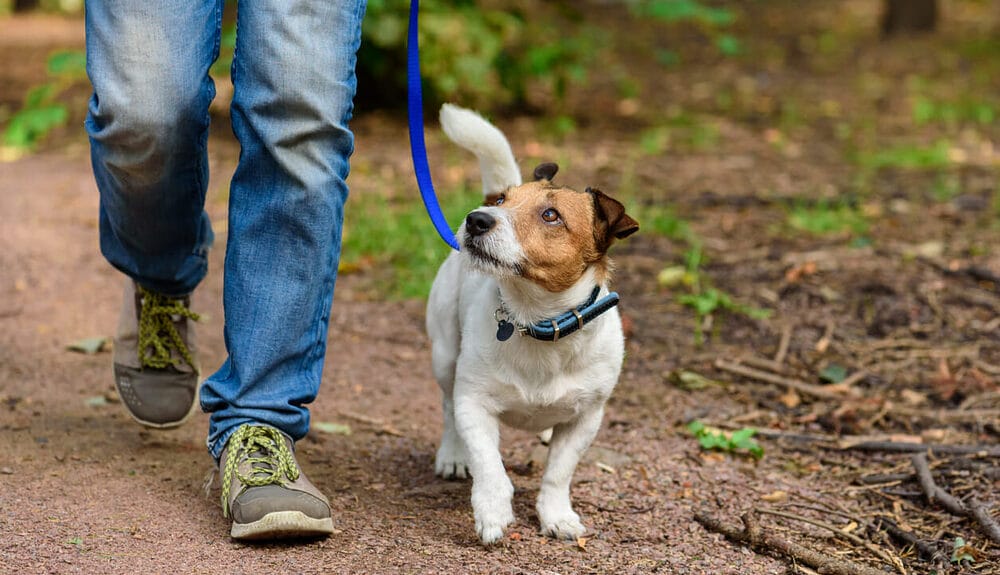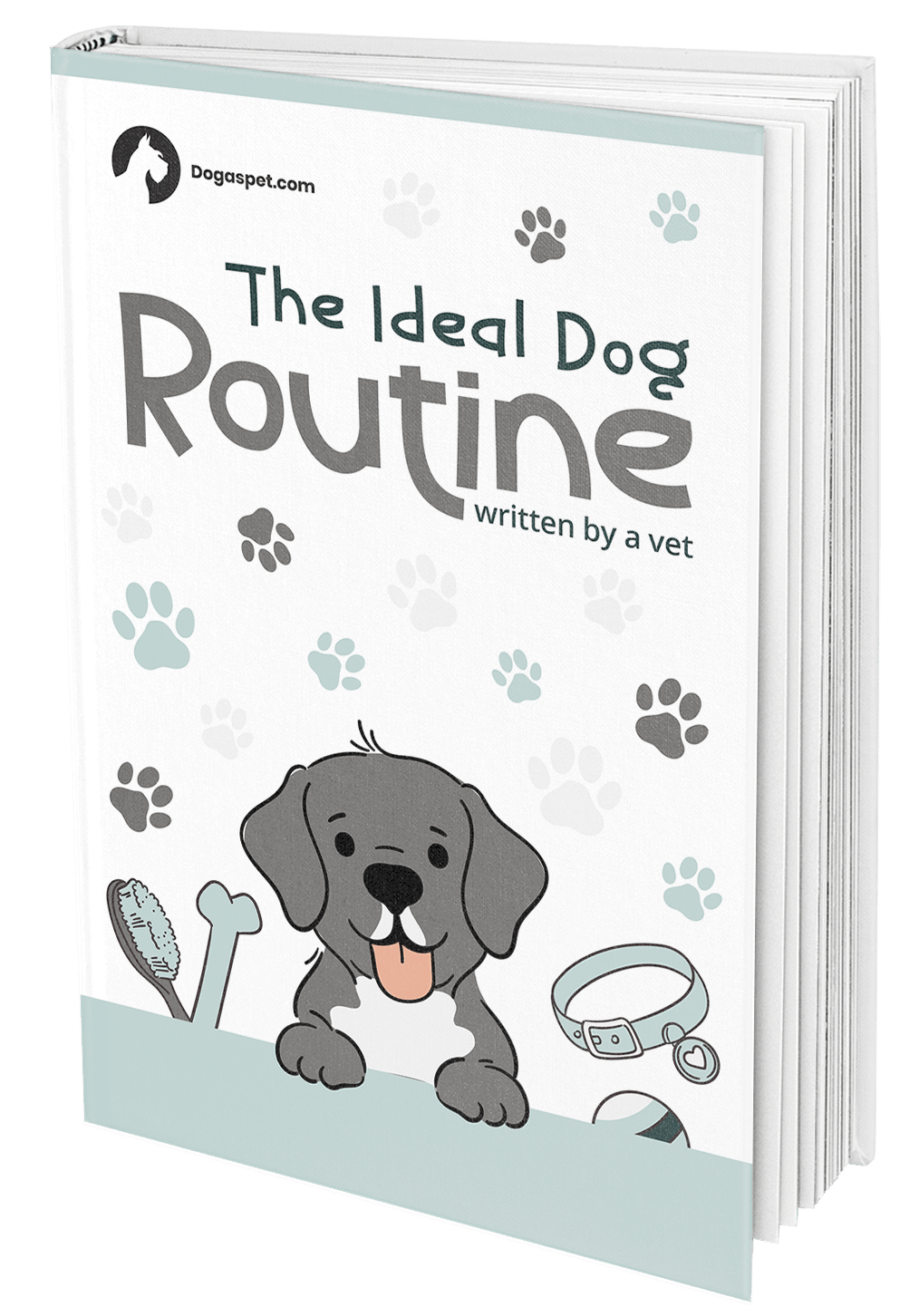
Feel the burn! Is not what you want for your dog on walks. Yes, daily walks are a great way to keep your pooch in shape, and maybe even work out his leg muscles a bit, but leash burn is something you want to avoid.
What exactly is rope burn or dog leash burn, and how does it occur? Let’s find out.
What is a Dog Leash Burn and how does it happen?
A dog leash burn occurs due to friction of the leash or harness against your dog’s skin. Dog leash burn can happen for a few reasons, but there are two major ones – an ill-fitting leash, or a reactive/aggressive dog.
Harnesses that are too tight will definitely dig into your dog’s skin, and if your pooch is extra reactive and doesn’t have good leash manners, he may likely pull and lunge on walks, which can also exacerbate the chafing.

Rope burn from the leash can happen to both you and your dog. Any type of struggle on the walk has the potential of chafing your dog and the skin on your hands.
Leash burns can manifest as a red spot, raw or broken skin, hair loss, scabs, or even open wounds. You will most likely see it affect sensitive areas such as your dog’s neck, chest, or armpits, anywhere the leash comes into contact with your pooch’s body.
Not sure where to look or how to treat dog leash burn? Don’t worry, we’ve got your back!
Identifying and Treating Dog Leash Burn
In order to find leash burns on your dog, you will need to closely examine the areas we mentioned above.
Look for any tenderness or red spots. If the leash burn has been happening to the same area for a while, you may notice hair loss, open wounds, and broken skin.
Even if you don’t notice anything on the surface but your dog is flinching at your touch, then it’s possible that rope burn is starting to manifest in that area. Give your dog a once-over after each walk to be sure.
If you do manage to find leash burn, you can apply a pet-safe ointment or even a pet-friendly moisturizer to help moisturize the area and promote healing. If you’re not sure what to use, ask your vet!
We also recommend reflecting on the issue and identifying the problem. Is it the leash or is it your dog’s excessive lunging and pulling on walks?
Initial leash burn isn’t too difficult to treat, but if the condition worsens, please take your dog to the vet asap and avoid aggravating the wound.
Prevention of Dog Leash Burn
Rope burns, leash burns, and carpet burns (who got these on their knees as kids?) are a nuisance and painful, and they can be even worse for your dog because they tend to happen in high-contact areas.
You cannot avoid touching the burns when you take your dog out for a walk, so the best idea is to prevent them from happening.

Even if rope burn has already manifested itself, these tips will be helpful to make sure they never happen again.
- Pick a suitable-sized harness – Make sure the sizing is right and not too tight. You should be able to fit two fingers through at any point where the harness comes into contact with your dog’s skin.
- Choose the right material – If possible, choose a soft material like mesh, nylon, or even neoprene. Padded material is always good because thin material can also make leash burn worse.
- Add extra padding – If necessary, add extra padding to the areas where the abrasions happen for more support.
- Loose-leash training – If your dog leads you on walks, pulls, or lunges, then it’s time to do some training. Teaching your dog how to walk with a loose lead (meaning they walk next to you without the leash being taut), can prevent leash burn altogether. Not to mention, your walks will be much more enjoyable and relaxing.
Prevention of Rope Burn Infection
Something as minor as rope burn does have the potential to become much more serious. It happens if it is undiscovered or treated after a long period.
Rest assured that it’s pretty difficult not to notice rope burn because your pooch will let you know. He will vocalize his discomfort when you put on the harness, or he may even run from it – trust us, you’ll know.

It’s still a good idea to check your dog and not wait for him to show you the signs. How do you make sure the burns don’t worsen or get infected? You’d be surprised at how similar the remedies are to human rope burn injuries.
- Clean the spot – Once you notice the wound, clean it right away and thoroughly. Use non-irritating pet soap, a mild antiseptic solution (if you have one from your vet), or a diluted iodine solution to gently clean the area. Please avoid using harsh creams and ointments or ones that haven’t been approved by a trusted professional.
- Keep it dry – If you’ve read about dog ear plucking, then you know the havoc moisture can wreak. Moisture is what bacteria need to thrive and it also prevents healing. After cleaning the wound, make sure to keep it dry. Speaking of keeping things dry, it brings us to the next point.
- Don’t let your dog lick it – Oh, but will he try! Dogs have a natural tendency to lick their wounds, which doesn’t help the healing process (especially since we want to keep things dry). We understand that you can’t keep an eye on your dog 24/7, so consider a cone or Elizabethan collar just to keep your dog away from the wound while it heals.
- Monitor the wound – Prevent the infection by keeping a close eye on the burn. Look for signs of infection, such as increasing redness, swelling, discharge, foul odor, and more serious cases, a fever. If you notice any of these signs, contact your vet right away.
- Ask your vet – If the burn is significant enough, contact your trusted professional as the vet may recommend additional measures such as suturing, stronger medication such as antibiotics, or other specialized instructions.
Remedies to Avoid for Dog Leash Burn
Now you know what you SHOULD do, but what should you definitely NOT do for a dog leash burn?
We mentioned this already, but it’s so important we have to say it again.
Do not use harsh chemicals, strong disinfectants, or hydrogen peroxide on your dog’s wound. Only use what is pet safe and/or recommended by your vet.
Some human topical creams and ointments are okay for pets (ask your vet which ones), but most are not. Some contain toxic ingredients that can cause serious harm to your dog if ingested. We all know how much dogs like to lick, so do your best not to use remedies meant for human use.
A lot of what to avoid is similar to if you were treating human wounds. Avoid bandages or dressing that can stick to the open injury. We don’t know about you, but we think it sure is painful to remove gauze that is stuck to a healing wound. Not only will it hurt your dog, but it could exacerbate the burn. Do your best to let the wound heal without covering it unless specifically instructed.
Although they aren’t remedies, avoiding strenuous exercise and contact with the wound are still valuable pieces of advice, so keep them in mind too!
FAQ – Frequently Asked Questions
We are coming to the end of this post, but before that – let’s answer some of the most frequently asked questions related to dog rope burns.
How to relieve the pain from a leash burn?
If the burn is more severe and your dog is in pain, ice or a cool compress can provide temporary relief to sustained leash burns. Cold treatments can also help reduce swelling and work alongside ointments and other forms of treatment recommended by your vet.
How long do dog leash burns last?
How long it takes dog leash burns to heal depends on the severity. Minor burns can take just a few days to heal if you follow instructions and keep the area dry. However, more severe cases and ones that are infected can take several weeks.
Can Vaseline heal burns?
Also known as healing jelly, Vaseline, or petroleum jelly that is extra purified is an excellent agent to help heal burns. It provides a protective coating on your skin to help the healing process and has a soothing quality to it. However, it is not recommended for dogs in large quantities.
Bottom Line – Enjoy Your Walk
You definitely do not want your dog to “feel the burn” on his daily walks. A good amount of exercise can be the difference between a mischievous dog and one that’s well-behaved, but only if the leash isn’t causing your pooch any discomfort.
Remember to give your dog a once-over after each walk just to check if there are any raw spots on his skin and make sure the harness is a good fit and made with comfortable material. Walks with your dog should be enjoyable!

